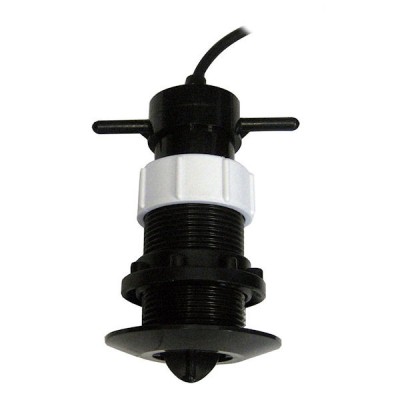We received a deluge of responses when we asked how you keep your log impellers fouling-free. Here are 9 of the best...
In response to a request for helpful tips on how to stop log impeller fouling, we have received letters from PBO readers all over the world. Here they are – international answers to the question: ‘How do I stop my log from clogging?’
1. Half a turn
If you think your log might be fouled, before removing it completely, first try loosening the retaining ‘nut’ and rotating the log by 180° when under way. It might just be enough to loosen any weed, but probably won’t shift any crustacea.
After you have cleaned the log you will certainly notice an improvement in your boat’s performance – if that’s the case, recalibrate the log!
Garry Doherty
Folkestone, Kent
2. Sweet sour solution
I have found that both in the Solent and different parts of the Mediterranean, after initially brushing off the loose debris, soaking the impeller in vinegar for a couple of hours cleans it off a treat. I then give it a squirt of WD40 to lubricate the bearings and a brush over with Vaseline which seems to delay recurrence of the problem.
John Rotter
Warsash, Hampshire
3. Keep it slippery
I agree with your expert Chris Ellery that there is no complete solution to log clogging, but I keep a jar of Vaseline handy and liberally coat around the impeller whenever I remember. It seems to keep the wheel turning more freely and the clogging away for longer.
Andrew Stopp
Melbourne, Australia
4. Whip it good
Just throw a soft mooring rope loop around the bow when leaving the marina. The forward movement of the boat will wash the rope under the keel. With your arms outstretched work the rope aft to the region of the log paddle wheel, and with a little tension and a see-sawing action work the rope back and forth over the area. The contact starts the wheel turning.
Try it, it has worked for me once a week for two years – and the technique gets easier every time!
Charles Ellis
Beccles, Norfolk Broads
5. Ditch it
The easiest way to avoid a paddle wheel-type log getting fouled is simply to use your GPS instead. I removed my through-hull log last year and have never regretted it.
If you know the speed your boat will do at certain revs in calm water, you can check this with the GPS to see if the tide is having an effect on your speed.
Roy Shears
By email
6. Another coat
Carefully paint the paddle wheel and the inside of its housing with antifouling. Clearly this needs to be done so as not to clog the bearing: repeated manual spinning of the wheel while the antifouling dries seems to keep it running free.
Greg Manning
Aberdeenshire
7. A light lick
I overcame the problem by removing the paddlewheel and painting it and its recess with regular antifouling paint. One or two light coats seem to last four to six months.
Care must be taken not to get paint on the pins and their respective holes in the paddle. I have heard that the paint may alter the transducer’s calibration, but I have always found the transducer speed and distance corresponds well with the GPS readings.
Alternatively, you could remove the transducer and store it in fresh water to eliminate any residual marine life between trips.
Nic Cillie
Simonstown, SA
8. Scoop it up
My good friend Lauhrie ‘Never Reef’ Borer has come up with a solution to the mess in the true spirit of PBO. He has cut a hole in a large plastic ice cream tub and siliconed it around the base of the speed log to act as a sump. With practice you can then take the log out, put the bung in, use a toothbrush and the water that came into the sump to do the cleaning, and then put the log back in. Sponge out the water from the ice cream tub, chuck it over the side, and you’re ready to do battle again with King Neptune.
Tim Rose
Medway
9. Paint with ease
As an experiment, I took a small paintbrush and painted my boat’s log sensor paddle wheel and housing with a light smear of Copper Ease grease. The paddle wheel, which previously had to be cleaned every week or so, has now survived for nearly two months without needing any attention.
I doubt this approach would last a whole season, but it seems to be a good solution so far.
Gerry Woods
Havant, Hampshire
Thanks to everyone who responded – Ed




